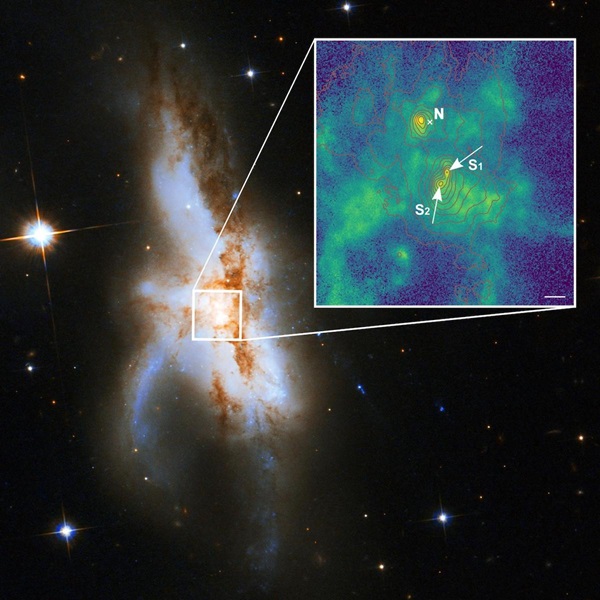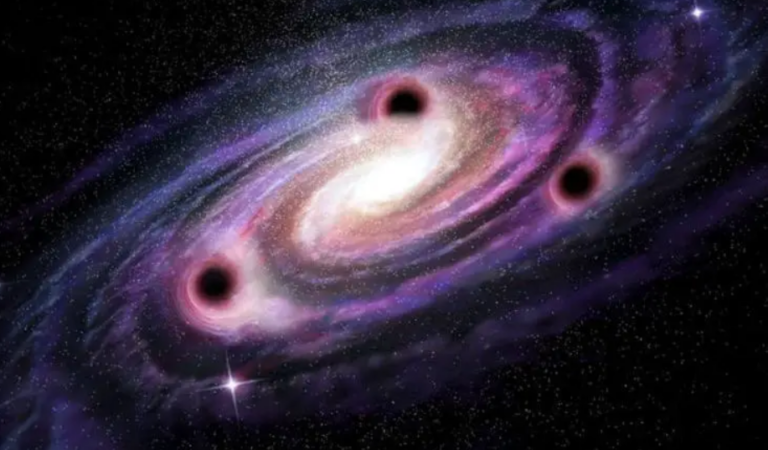A single galaxy harbors three supermassive black holes, each with a mass exceeding 90 million Suns.
Finding that two supermassive black holes, partners essentially within a cosmic duet, are locked in each other’s embrace is not unheard of. But it is a little funny to observe three creatures fighting for an empty place.
Actually, the triplets like that are not usually to be seen by astronomers. For instance, according to the paper for publication in Astronomy & Astrophysics accepted few days ago, there is a single galaxy, known as NGC 6240, which hosts three massive black holes.
Three black holes for the price of one

In the study conducted by the authors, the international team of astronomers revealed that there are three active supermassive black holes in the center of the galaxy of NGC 6240 and the scientists were able to observe that this galaxy has undergone a triple merging process and the physical nature of this merging can already be seen.
For some unknown reason, this galaxy’s elongated appearance had led astronomers to expect that the unusual extended structure arises from a simple two-galaxy merge event that occurred some 300 million light years away.
They presumed that it was such an interaction when these two galaxies escalated to hundreds of miles per second, and are still fusing. Hence, if the predictions by the researchers were right, they would find two more supermassive black holes residing close to the heart of the merging process.
However, it only found three dense black holes which have a mass of over 90 million Suns after the team utilized 3D imaging to swoop on the heart of NGC 6240. (As a point of comparison, the nearest supermassive black hole, Sagittarius A* is about 4 million suns in weight. ) In addition, the three big black holes of NGC 6240 are packed in an region that spans less than 3,000 light year, or about one percent of the galaxy that hosts them.
“At the centre of this system, three supermassive black holes are in a dense arrangement which has never been observed in the universe before,” said Peter Weilbacher from the Leibniz Institute for Astrophysics Potsdam in the media release. This is for the first time scientists are witnessing a group of supermassive black holes, though they have found evidence of three separate galaxies and the black holes linked to these galaxies coming in for a flying honeymoon.
The discovery not only demonstrates how multiple galaxies can combine simultaneously to form the largest galaxies in the universe, but it is also a strange, thrilling, and unprecedented discovery. That’s a process that confounds astronomers because, despite the universe being nearly 14 billion years old, they observe galaxies that are too massive to have been assembled by slower, two-galaxy mergers.
Weilbacher stated that the largest galaxies with their central supermassive black holes were able to evolve much faster if multiple galaxies underwent simultaneous merging processes. “This scenario is first indicated by our observations.”
Do not forget to share your opinion with us to provide you with the best posts !




0 Comments